Uttarakhand is bestowed with abundant natural beauty and wildlife. There are a number of wildlife sanctuaries as well as national parks in the state that are rich in flora and fauna. The place is the natural habitat of several tropical animals that flourish in the beautiful valleys of the Himalayas. Wildlife in Uttarakhand has been the source of attraction for a number of tourists who visit this place of mesmerizing landscapes and enthralling imageries.
Among the National Parks of the state that are famous among the tourists include Corbett, Rajaji, Nanda Devi, and Valley of Flowers National Park. Jim Corbett is the jewel of Uttarakhand. It is one of the finest national parks of India. A home of tigers, elephants, leopards, and other wild animals, this park is landscaped by topographical features like marshes, plateaus, and hilly terrains. The park abounds in vegetation like trees of sal, chir, and bakli. Among fauna, tigers, jungle cats, deers, jackals, black bears and leopards are quite prominent.
Let’s explore the popular National Parks & Wildlife sanctuary in Uttarakhand.
Askot Wildlife Sanctuary
- Location: Pithoragarh, Uttarakhand
- Area covered: 284 square km
- Known for: Musk deer, Snow Leopard
- Establishing year: 1986
- Best timings: Months between November and June
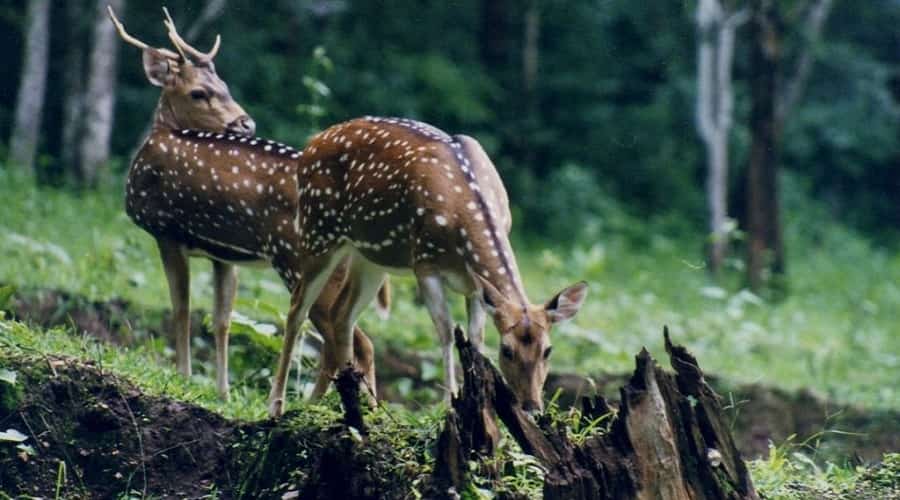
Askot Wildlife Sanctuary is situated near the district of Pithoragarh, at about 55 kilometers from it. The word “Askot” means eighty forts and the place is known for the existence of several forts in the nearby area. The place, in ancient times, was a seat of Katyuri Dynasty. Hilly peaks and immense greenery that surround this picturesque place offer amazing sights to the visitors.
The sanctuary lies at an altitude of 1650 meters and is the conservation area of the musk deer as well as snow leopard. Though musk deer are found in abundance here, yet steps are needed to protect this endangered species.
Flora and Fauna
Several plant and animal species are present in the park premises. Among the most prominent wild species that are scattered throughout the sanctuary include leopard, snow tiger, bharal, kakar, Himalayan bear, civet, tahr, snow cock, spotted deer, chukoras, and serow, tahr, pheasants etc. Flora often comprises of trees of kunj, kail, raijal, darkunja, bhoj patra, and khersu.
Accommodation
Facilities of rest houses can be availed at Kaflani, Tejam, and Askot.
Kedarnath Wildlife Sanctuary
- Location: Chamoli, Uttarakhand
- Area covered: About 967 square kilometers
- Known for: Musk Deer and Snow Leopard
- Establishing year: 1972
- Best timings: Months between June and November
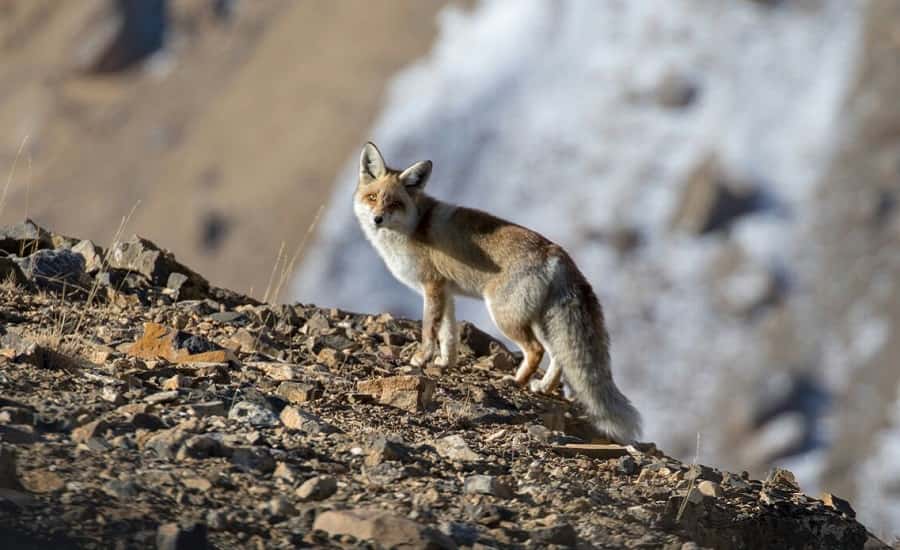
Located in the district of Chamoli, Kedarnath Wildlife Sanctuary presents a spectacular stretch of the Himalayas that is rich in ice-laden mountainous peaks, dense forests, grasslands, and innumerable exotic species of animals and birds. Popular for plethora of flora and fauna species, this sanctuary remained a reserve forest until 1920, but was changed to a sanctuary in the year 1972. Named after the famous Kedarnath temple, the sanctuary has earned the distinction of being the largest protection area of the western Himalayas.
Topography and ecosystems
Endowed with pristine snow mountain ranges, glaciers, and lakes, Kedarnath Wildlife Sanctuary is marked with amazing landscapes and climatic diversity. Situated in the alpine meadows of India, Tibet, and Nepal, the sanctuary is home to temperate forests of low and coniferous, alpine, and Bugyals of higher altitudes. It is located at the catchment area of Alaknanda River.
Attractions of the place
Flora: The diversity in geographical and physiological features is the reason behind the presence of rich floral species. Trees of rhododendron, oak, pine, birch, and innumerable flowering plants are found in abundance. Chir pine is found at an altitude of 2000 feet. Vegetation of temperate zone consists of Ban oak Quercus incana, and Karsu oak Q. semecarpifolia. Oak and fir are generally found at higher altitudes. Among the flowering plants, sedges, lacta, and munda are the most prominent. Apart from these, Kedarnath Wildlife Sanctuary is home to several medicinal plants that are known for their herbal properties.
Fauna: The place is laden with innumerable varieties of mammals, reptiles, primates, and birds. Black Bear, leopard cat, jackal, snow leopard, common leopard, and Marten are some of the mammalian species that reside here. Others include wild boar, sambhar, goral, tahr, serow, bharal, and muntjac. Langur and rhesus macaque are the primates that can be seen in abundance. Endangered musk deer of the sanctuary can be seen roaming occasionally. Among other mammals that are known to exist here include porcupine, flying squirrel, shrew, snow cock, mountain vole, and Royle’s pika. The important avifauna comprises of flycatcher, warbler, Himalayan Monal, pheasant, and tree-creeper.
Conservation Steps
In order to protect the exotic species of the sanctuary, several conservation steps have been taken. In association with WWF, Indian government has initiated a program related to the threatened deer. A special breeding center has been opened to propagate the species of this rare animal. A botanical field is opened at Tungnath; surveys related to fauna, fish and avifauna are conducted from time to time.
Accommodation
Several Dharamshalas are available at places like Kedarnath, Trijuginarayan, and Gaurikund. One can also stay at Sonprayag and Madhyamaheshwar.
Valley Of Flowers National Park
- Location: Near Govindghat, Joshimath
- Area covered: About eighty seven square kilometers
- Known for: Flowering Plants
- Establishing year: 1982
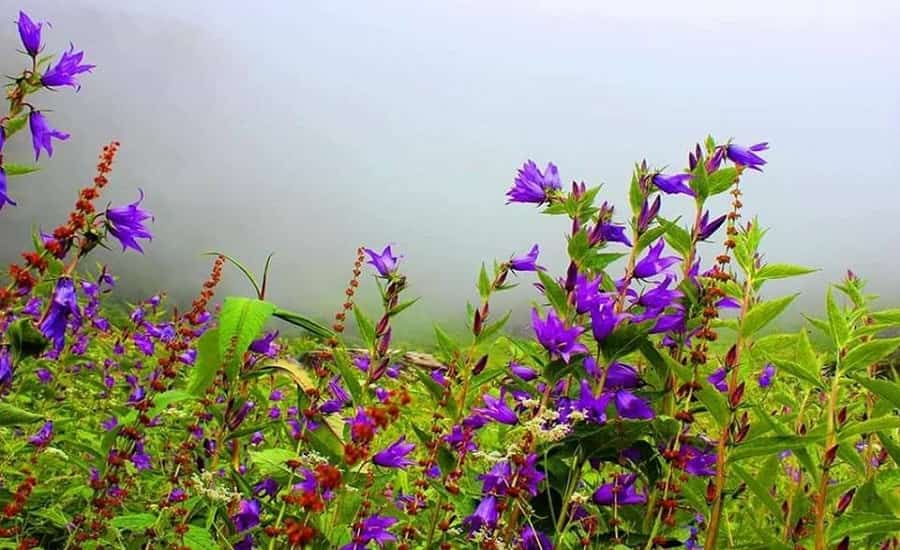
Valley of Flowers National Park is famous for the presence of meadows of flowering plants and medicinal herbs that are known to inhabit this area. Set amidst lofty Himalayan ranges, this park is a blessed with abundant natural beauty and splendid landscapes. The park was declared a UNESCO world Heritage Site in the year 1988. The place is renowned for the presence of the largest number of wild flowers. The park was established to conserve the wilderness of the area near Pushpavati River which flows through the park premises.
This beautiful valley was founded accidentally by a mountaineer called Frank Smythe during one of his expeditions. As the place is extremely picturesque, it was named “Valley of Flowers”. The breathtaking meadows can make one spell bound. One can explore the enchanting beauty of the snow-laden peaks and numerous water bodies that surround the Valley of Flowers National Park.
Attractions of the Place
Flowering Meadows: There are more than 300 species of flowering plants that bloom and present a breathtaking picture which is alluring to one’s eyes. The best time to visit this extremely gorgeous place begins from the month of April when the park gets filled with scents of hundreds of colorful flowers. It is during this time that ice covered on the mountains peaks starts melting; as the season of Monsoon approaches, Valley of Flowers National Park gets painted with bright hues of red, yellow, green , and pink.
As the valley gets drenched with the water flowing from the peaks, countless number of flowering plants, herbs and shrubs start shooting from their seeds and soon the entire place appears to be playing with colors. With the advent of monsoons, plants like Germanium, Balsam, French Blue, Pedicularis, and Primulas cover the entire space. The other species that are known to sprout during this season include Ligularia, Anaphalles Campanula, Rhododendron, Inula, Marigold, Lilium, Corydalis, and Epilobium.
The place is home to plants like Blue Poppy, Brahma Kamal, and Lily. Such a diverse flora is attributed to the unique ecoregions that support the habitats of such a huge number of flowering plants. A large number of flora consists of threatened species or the varieties that are not found elsewhere in world. Valley of Flowers National Park is renowned for conserving these species and preserving them in their natural habitats. Trillium govanianum, Bergenia, Oak, Polygonum, Potentilla, and Phlomis are can be seen blooming throughout the park area.
Abundant natural beauty: Apart from exquisite flora that blooms here every year, visitors have the delight of experiencing enormous natural splendor which can be seen in the form of lofty mountain ranges, glistening streams, spotless snow-peaks and numerous ferns and tendrils that can be seen hanging here and there. The route that takes one to the park is also laden with enchanting Roses, Morinas and Uncinata.
Fauna: Valley of Flowers National Park is home to abundant fauna like Red Fox, Black Bear, Golden Eagle, Snow Pigeon, Snow Leopard, Langur, Griffon Vulture, Monal, Snowcock, and Sparrow Hawk.
Accommodation
Ghangharia which is a rest house at the forest has two suits that provide comfortable accommodation to the visitors. But one has to arrange for food on his own. There are several restaurants that offer meals to the guests at economical prices.
Suggested Tour: Valley of Flowers Trek
Govind Wildlife Sanctuary
- Location: District Uttar Kashi, Uttarakhand
- Area covered: About 957 Sq kilometers
- Known for: Rare species of fauna
- Establishing year: 1955
- Best timings: Apr to June, Sep to Nov
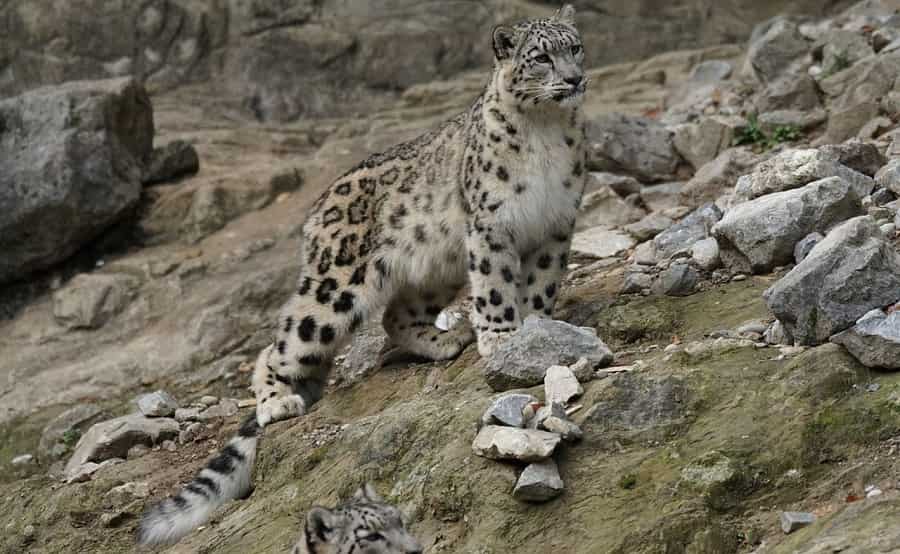
Lying in one of the most enchanted places of Garhwal, Govind Wildlife Sanctuary is located amidst picturesque meadows and landscaped with majestic glaciers and ice-laden peaks. The place is a popular holiday destination and a perfect haven for those who want to spend time exploring the mysteries of nature. Commonly called by the name Gobind Pashu Vihar, the place is home to several endangered species.
Legends associated with the place
According to a legend, Lord Hanuman flew over Palk Strait and reached Uttarakhand in India; it is from this place that he carried a herb to cure Lord Rama who was injured during his battle with the demon Ravana. The medicine is believed to have cured Rama.
Attractions of the place
Lying between the altitudes of 1300 and 6000 meters, the sanctuary is known to encompass rich vegetation and preserves a number of rare species of animals. Govind Wildlife Sanctuary forms a major catchments of the river Tons; its significance as a watershed area to Yamuna River is also immense.
Diversity of flora and fauna: Major flora species that are found at Govind Wildlife Sanctuary include varieties of chir, oak, cedar, and several other vegetations consisting of broad leaves. At an altitude of about 2600 m, one can find silver fir, walnut, hazel, yew, rhododendron, horse chestnut, and maple. A plethora of medicinal plants are known to grow here; trees are used in manufacture of several life-saving drugs here. As far as fauna is concerned, the place is home to several endangered species including snow leopard.
It is home to wild animals like black bear, bharal, kokla, chukor, musk deer, tahr, pheasant, and monal. Hedgehog, palm civet, squirrel, and Sikkim vole are also found in abundance here. In total, there are about 15 mammals and 150 avian species that are known to inhabit in the jungles of the sanctuary. One can also watch the activities of birds like owl, warbler, finch, bulbul, minivet, thrush, and cuckoo.
Trekking options: There are several trekking routes that one can adhere to. The most popular and the easiest path consist of Sankri to Har ki Doon route. Other routes include paths from Sankri to Osla; Ruinsara Tal to Yamunotri; and Naitwar to Sangla. The latest is the toughest one and lies partially in Himachal Pradesh. One can enjoy adventurous activities like trekking, mountaineering, and rock-climbing here. The place is perfect for adventure-seekers.
Accommodations
Rest houses at Govind Wildlife Sanctuary are available for the sake of tourists. These accommodations are located at Naitwar, Satta, and Har ki Dun. GMVN i.e. Garhwal Mandal Vikas Nigam also provides rest houses along with the catering facilities.
The sanctuary is the exclusive retreat for the tourist and offers plethora of opportunities to explore endangered wild life.
Nanda Devi National Park
- Location: Chamoli, Uttarakhand
- Area covered: 630 sq kilometers
- Known for: Rich flora and fauna
- Establishing year: 1982
- Best timings: Monsoon season and months between April and October
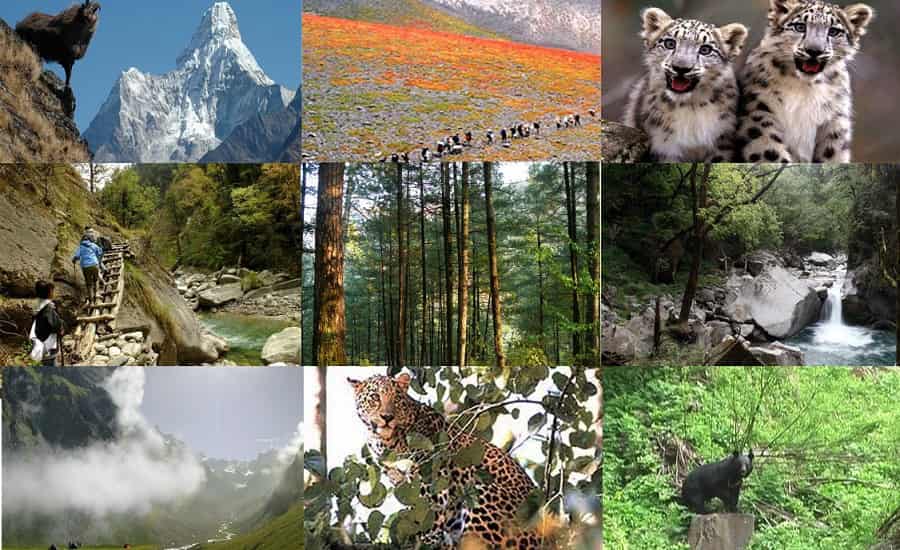
One of the most spectacular places of wilderness, Nanda Devi National Park is endowed with immense natural splendor and a plethora of exotic wild life. The pristine beauty and splendid backdrop have made it a popular holiday destination for nature lovers. The virgin mountains that frame the park offer several opportunities for trekking and other expeditions.
The place was first accessed by Shipton and Tilman who made painstaking efforts to find a route going up to the Ganga Gorge. In the year 1936, Tilman along with Odell made attempts to ascend Nanda Devi peak and were successful in it. In the early forties, the place came to be known as Nanda Devi National Park.
Attractions of the place
Flora: More than 300 floral species are known to exist here. As many as 17 of them are categorized as rare. Before entering the park premises, one has to take permission from the authorities. Joshimath is one of the important points of the place from where one can start his trip. The lavish surroundings of the park abound in rich vegetation. Nanda Devi National Park is mostly dominated by trees of fir and rhododendron. Varieties of birds are found at an altitude of about 3300 meters.
These dense forests are interspersed with alpine vegetation that support species like juniper. As the altitude increases, one can find grasses, lichens, and mosses thriving successfully. Local residents depend heavily on forest vegetation. Some of them are used in food products, while others are utilized as medicinal purpose. Some of the floral vegetation is also used for religious purpose.
Fauna: A plethora of wild animals are known to thrive in the dense forests of the park. One of the most elusive species that exists here is the snow leopard which is found in abundance. Apart from it, a huge population of animals belongs to the Bear-family including yellow leopard and Himalayan bear that can be sighted in the jungle premises. Other most common animals are blue sheep, serow, musk deer, langur, goral, leopard, and Himalayan tahr. Langur is the only primate that exists here.
Avifauna: There are about 114 species of birds that inhabitate the forests of Nanda Devi National Park. During summer season, one can hope to find the black tit, flycatcher, and fantail. Robin, Indian pipit, and breasted pipit, nutcracker, and rose finch are among the other varieties that can be fluttering in jungle premises. In addition, around 28 butterfly species that exist here.
Cultural association
The park is named after the goddess Nanda Devi who is considered a manifestation of Parvati. Since ancient times, the goddess has been revered by the devotees. The pilgrims come to the place to pay their homage to their sacred deity.
Nearby attractions
One can extend his trip by visiting the nearby places like the Valley of Flowers, Nainital, and Garhwal that offer tranquil surroundings and are a haven for the tourists. Joshimath is an important place for trekking and mountaineering. Nanda Devi peak that is quite tough to climb is the major attraction. In fact, Nanda Devi National Park is accessible only by trekking and the visit to the interior of this UNESCO World Heritage Site is banned.
Accommodation
Comfortable facilities are available at Joshimath. A number of hotels, lodges, and guest houses are provided by GMVN.
Conservation area
The park is one of the most important conservation areas that are meant to protect nature and natural life in their best preservation form. Accommodating a number of threatened species, the park is largely unspoilt due to restriction on human interference and difficulty in accessibility.
Jim Corbett Park
- Location: Near Nainital, Uttarakhand
- Area covered: About 521 square kilometer
- Known for: Project tiger
- Establishing year: 1936
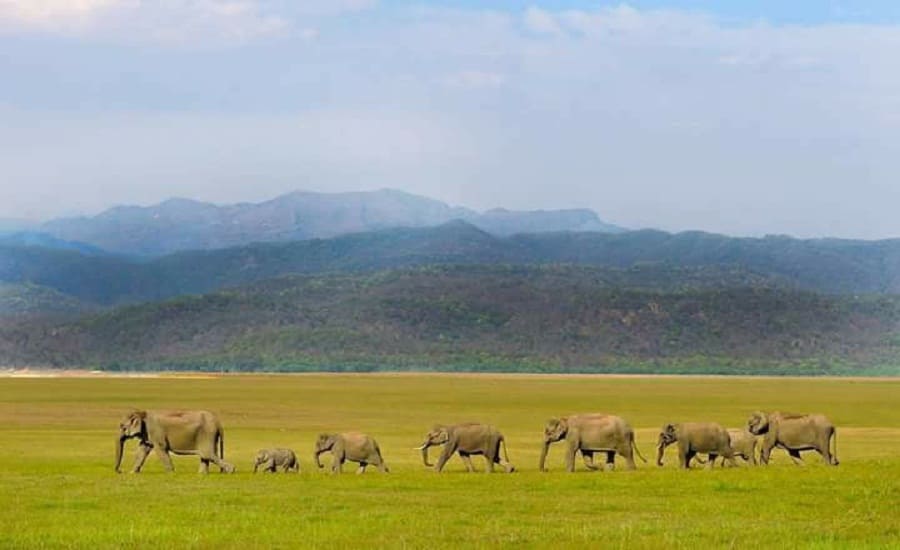
Jim Corbett Park is situated in the district of Nainital in Uttarakhand. Earlier famous by the name of Hailey Park, it is India’s oldest national park. Established in the year 1936 and named after the famous conservationist, Jim Corbett, the park is one of the most spectacular wilderness areas of the state.
The park is situated in the Himalayan foothills and is landscaped with picturesque surroundings. Ramganga River acts as a main source of water to the park; a dam called Kalagarh, situated near the park is known to form a big lake. The low valley of Jim Corbett Park is cut by a series of mountainous ranges running in the east-west direction. Blessed with splendid sceneries and charming backdrops, the park is one of the major attractions of the state.
History Behind Name:
The park was originally called Hailey national Park. It was named so after Malcolm Hailey who was the Governor and had an avid interest in this preservations area. As India got independence, the park was renamed Ramganga Park. But it was again changed and called Jim Corbett Park to commemorate the services of Jim Corbett who played a major role in determining the location of the park. As most of his childhood was spent amidst nature, he was well aware of its importance to mankind. He was also a great hunter and was called time and again by the villagers of Kumaon to kill tigers and leopards. The animals were hunted only when they turned man-eaters and posed a threat to the existence to human beings.
Attractions of the Park
The place is haven for adventure seekers who get ample opportunities of exploring wildlife. In addition, one can have a treat of enjoying several adventure-sports and seek solace in the arms of lovely nature. It is the perfect getaway for those who want to spend time in seclusion.
Flora: The Park is rich in several types of fauna that are adaptable to the topography of the place. There are more than 100 species of trees and 50 shrub species that are known to exist here. Forests of Sal and Acacia grow here predominantly. The overall density of trees is more in the area dominated by Sal. Other vegetation includes tress of Jamun, Khair, and Shisham. As one reaches the upper ranges of mountains, Bamboo, Chir, and bakli tress can be found.
Fauna: An animal species that is particularly famous in Jim Corbett Park and which attracts thousands of tourists from all over world is the Bengal Tiger. Other species that are present in jungle premises include Jungle Cat, Deer, Leopard, Elephant, Rhesus Monkey, Wild Dog, Otter, hare, Indian Mongoose, and varieties of Bear. As River Ramganga feeds the park, one can also hope to see aquatic animals like Crocodile and Gharials. There are over 33 reptilian species and seven fish species that have been recorded to exist here. Four species of deer i.e. hog, barking, chital, and sambhar are present in the park.
Chital are among the most adaptable species that are found here. Par or hog, Deer, Sambhar, Muntjac, and Wild pig are some of the other mammals that are found in abundance.
Avifauna: More than 550 bird species have made Jim Corbett Park their habitat. One can see species of Flycatchers, Finches, Cuckoos, Bulbuls, And Warblers nesting and laying eggs. The place is also home to plenty of migratory birds.
Accommodation facilities
In order to avail the accommodation facilities, one must take permission from the Field Director by sending him an application form.
Rajaji National Park
- Location: Hardwar, Uttarakhand
- Area covered: About 820 square kilometer
- Known for: Flora and fauna
- Establishing year: 1983
- Timings: Jan-March: 6.30am to 4.30 pm, Apr-June: 6.00 am to 5.00 pm, Nov-Dec: 6.30 am to 4.30 pm
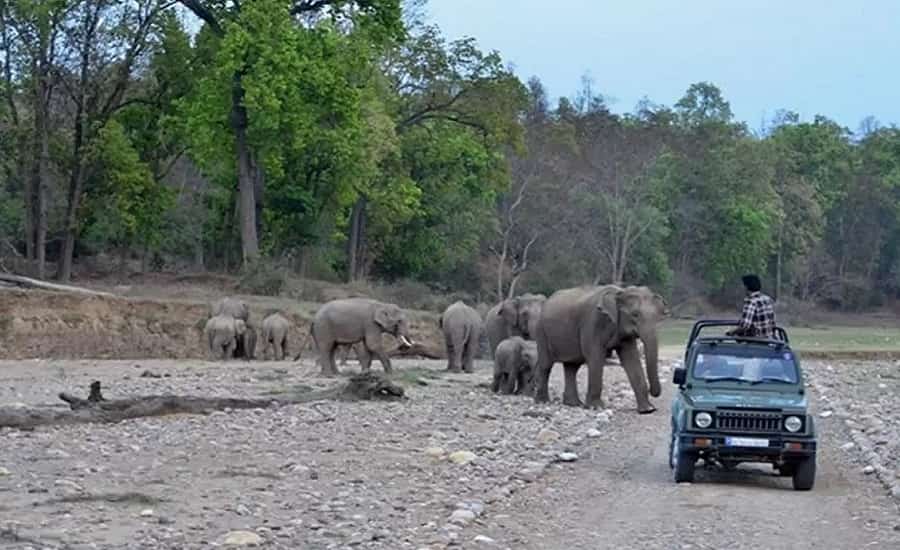
Located in the Himalayan foothills, Rajaji National Park is stretched over the districts of Haridwar, Garhwal, and Dehradun. It was formed by the amalgamation of three wild life sanctuaries existing already, namely, Chilla, Rajaji, and Motichur. Named after the famous freedom fighter C. Rajagopalachari, this national park is the major tourist attraction of Uttarakhand.
Attractions of the place
Scenic Beauty: Rajaji National Park is situated amidst Shivalik ranges that present breathtaking sceneries and mesmerizing landscapes. A major attraction for tourists as well as nature enthusiasts, the place abounds in natural imageries that are worth the admiration. The pristine beauty of the place can make one go spell bound. The breathtaking sceneries have made it a popular picnic spot. The park presents Shivalik eco systems that are millions of years old and abounds in fossils. River Ganges flows through the park; a number of small streams also form a part of the place.
Flora: Sal is the main deciduous tree that can be found in abundance at Rajaji National Park. In fact, it forms a major portion of all the vegetation that is found here. A diverse variety of forests are found here including mixed deciduous, savannah woodland, moist sal, dry deciduous, sisso , and chir pine forest. The main vegetation comprises of trees of sal, haldu, kharpat, bula, tun, gular, sirus, sain, and jhingan. Other varieties that are less common include papal, sandan, chamror, ber, chilla, and mahal. There are a number of forest zones and ecosystems that thrive here. Apart from trees, the park is also rich in scrubs and pastures.
Fauna: The wild life of the park is extremely rich; it is home to several ferocious animals like leopards, tigers, wild boars, and sloth bear. Other animals that can be seen in the forest premises include elephants, barking deer, jungle cat etc. There are, in fact, about 23 mammal species that form a part of Rajaji National Park. Tourists can also hope to find the goral, Indian hare, langur, monitor lizard, sambhar, and porcupine wandering in the dense forests. Besides these, the park is home to a number of invertebrate creatures like millipedes, centipedes, insects, fish, termites etc.
Among the reptilian, varieties of lizards, tortoises, snakes form a part of the Rajaji National Park. Besides these, a number of species belonging to Anura order like toads, frogs etc. are known to exist here.
Avifauna: There are more that 300 bird species that can be watched for their nesting and breeding habits. Main avian species that exist here are parakeets, pheasant, jungle fowl, kingfisher, woodpecker, finch, Indian roller, hornbill, and kaleej. Drongo, owlets, heron, pea fowl, lapwing, teals, and ducks are also very common here. About 60 species of butterflies exist in the jungle; these butterflies are known to exist in the area around Garhwal and hills of Kumaon.
Accommodation
A number of comfortable accommodations are available here; the luxury guest houses that come with exclusive rooms and other facilities are offered by GMVN. Authorities at Rajaji National Park have also made provisions of rest houses where one can stay while on the tour. Besides these, there are a number of other accommodation facilities like hotels and guest houses in the nearby area.


